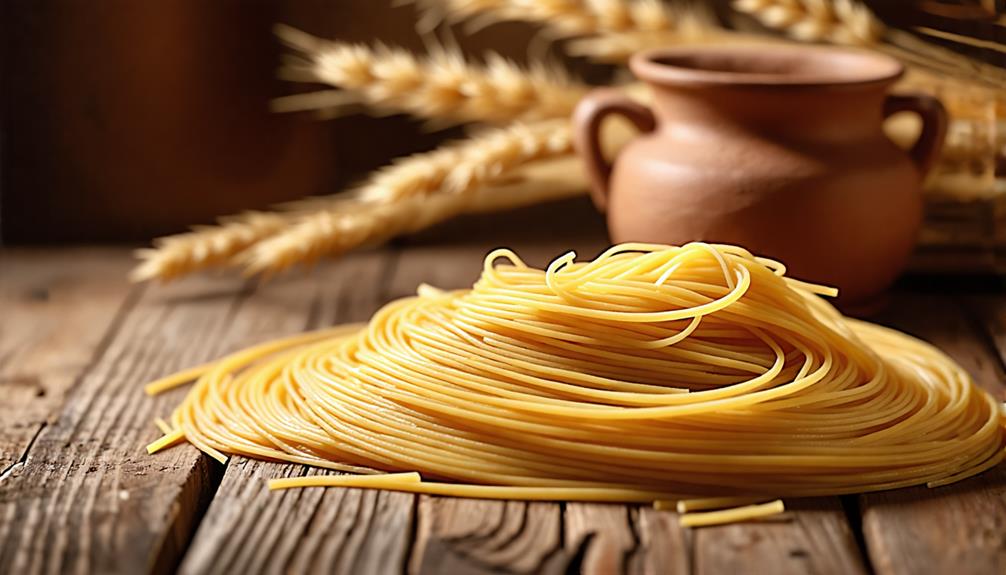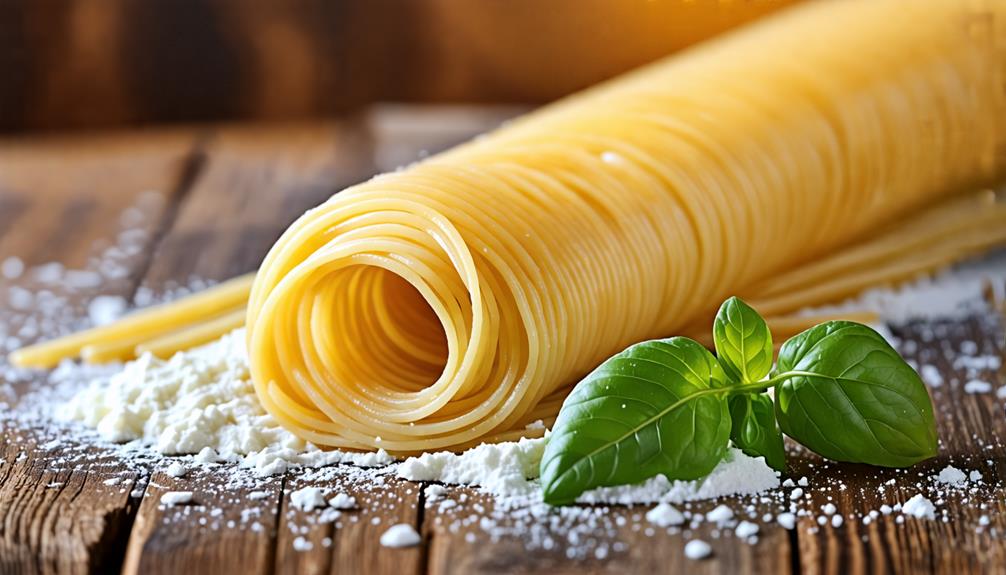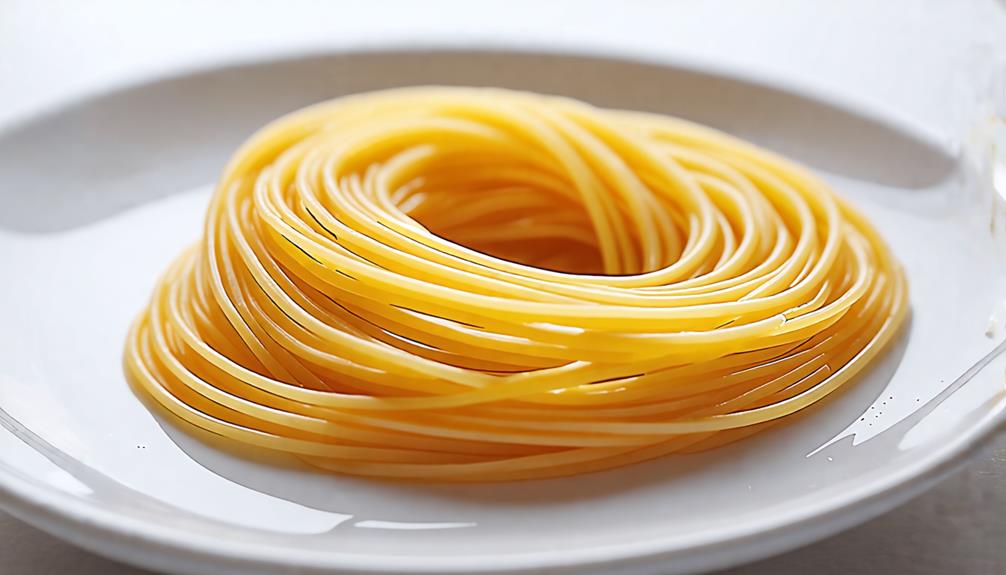You've probably eaten spaghetti countless times, but have you ever wondered what to call a single strand? It's not "a spaghetti," as you might think. The correct term is actually "spaghetto," derived from the Italian word for string. This linguistic tidbit isn't just trivia; it's a window into the fascinating world of Italian culinary language. As you twirl your next forkful of pasta, you'll find there's more to explore about the words we use for food and how they reflect cultural nuances. The story of spaghetto is just the beginning of a larger conversation about language, food, and culture.
Key Takeaways
- Spaghetto is the singular form of spaghetti, derived from the Italian word 'spago' meaning string.
- The term reflects the thin, string-like nature of a single strand of spaghetti.
- Italian linguistic structure uses 'o' for singularity and 'i' for plurality in many food terms.
- Historical usage of 'spaghetto' dates back to 1849, indicating deep roots in culinary discussions.
Origins of Spaghetto

You've probably never heard of 'spaghetto,' but it's the rarely used singular form of 'spaghetti,' derived from the Italian word 'spago,' meaning string. This term perfectly captures the thin, string-like nature of a single strand of spaghetti. In Italian language, 'o' typically denotes singularity, while 'i' indicates plurality, explaining the change from spaghetto to spaghetti.
While you might think 'spaghetto' is a recent invention, it actually has deep historical roots. The term was rediscovered in culinary discussions as early as 1849, long before it gained modern popularity.
Despite its long-standing presence, 'spaghetto' often gets overlooked in everyday conversations about pasta. This oversight has led to widespread misconceptions about its usage.
Cultural Impact and Reactions
While 'spaghetto' has historical roots, its recent surge in popularity stems from its unexpected viral fame on social media platforms.
You might remember the 2017 tweet that catapulted this food terminology into the spotlight, garnering tens of thousands of likes and retweets. The cultural relevance of 'spaghetto' was further cemented when Bon Appetit featured it in 2021, sparking renewed interest and discussions.
You've likely encountered the humorous memes and jokes that emerged as social media users expressed their disbelief at this singular form of spaghetti.
This fascination highlights how culinary discussions can be shaped by online trends. The way 'spaghetto' has captured public imagination demonstrates the power of social media to influence our understanding of food terms and traditional language rules, while also shaping cultural identity and culinary trends.
Italian Culinary Linguistics

When exploring Italian culinary linguistics, you'll discover that the language's structure plays an essential role in understanding food terminology, as exemplified by the singular form 'spaghetto.'
Italian linguistics dictate that plural forms often end in 'i,' while singular forms typically use 'o' or 'a.' This pattern extends to many pasta names, such as raviolo and gnocco.
Understanding these nuances enhances your appreciation of culinary language and Italian cuisine. The term 'spaghetto,' derived from 'spago' (string), perfectly describes a singular strand of pasta.
As you investigate further into Italian food terminology, you'll find that language and cultural identity are deeply intertwined. This connection is particularly evident in traditional Italian culinary practices.
Conclusion
You've now learned the charming term for a single spaghetti noodle: spaghetto.
It's more than just a fun fact; it's a window into Italian culinary linguistics and culture.
As you're twirling your next plate of pasta, you'll appreciate the linguistic intricacies behind each strand.
Remember, language and food are deeply intertwined.
So next time you're enjoying Italian cuisine, you're not just eating; you're participating in a rich cultural and linguistic tradition.

Leave a Reply